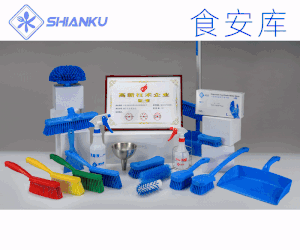食品伙伴網(wǎng)訊 2023年11月21日,歐盟食品安全局就一種磷脂酶A2(phospholipase A2)的安全性評(píng)價(jià)發(fā)布意見(jiàn)。
據(jù)了解,這種食品酶是由轉(zhuǎn)基因黑曲霉菌株P(guān)LA生產(chǎn)的,旨在用于蛋和蛋制品的加工,通過(guò)脫膠加工脂肪和油,以及生產(chǎn)改性卵磷脂(溶血卵磷脂)。
經(jīng)過(guò)評(píng)估,專(zhuān)家小組認(rèn)為,在預(yù)期的使用條件下,不能排除飲食暴露引起過(guò)敏反應(yīng)的風(fēng)險(xiǎn),但這種情況發(fā)生的可能性很低。根據(jù)所提供的數(shù)據(jù),評(píng)估小組得出結(jié)論,這種食品酶在預(yù)期使用條件下不會(huì)引起安全問(wèn)題。部分原文報(bào)道如下:
The food enzyme phospholipase A2 (phosphatidylcholine 2-acylhydrolase, EC 3.1.1.4) is produced with the genetically modified Aspergillus niger strain PLA by DSM Food Specialties B.V. The genetic modifications do not give rise to safety concerns. The food enzyme is free from viable cells of the production organism and its DNA. It is intended to be used in the processing of egg and egg products, in the processing of fats and oils by degumming and for the production of modified lecithins (lysolecithin). As residual total organic solids (TOS) are removed in the refined fats and oils during degumming, dietary exposure was calculated only for the remaining two food manufacturing processes. For egg processing, the dietary exposure was estimated to be up to 1.712 mg TOS/kg body weight (bw) per day in European populations. Wet gum can be used to produce lysolecithin with the highest dietary exposure of 1.61 mg TOS/kg bw per day in children at the 95th percentile when used as a food additive. Genotoxicity tests did not raise a safety concern. The systemic toxicity was assessed by a repeated dose 90-day oral toxicity study in rats. The Panel identified a no observed adverse effect level of 1350 mg TOS/kg bw per day, the highest dose tested, which, when compared with the estimated overall dietary exposure, resulted in a margin of exposure of at least 851. A search for the similarity of the amino acid sequence of the food enzyme to those of known allergens was made and no match was found. The Panel considered that the risk of allergic reactions by dietary exposure cannot be excluded, but the likelihood is low. based on the data provided, the Panel concluded that this food enzyme does not give rise to safety concerns under the intended conditions of use.
本文由食品伙伴網(wǎng)食品資訊中心編輯,有任何疑問(wèn),請(qǐng)聯(lián)系news@foodmate.net。
相關(guān)政策解讀











 地區(qū):
地區(qū):






 魯公網(wǎng)安備 37060202000128號(hào)
魯公網(wǎng)安備 37060202000128號(hào)



